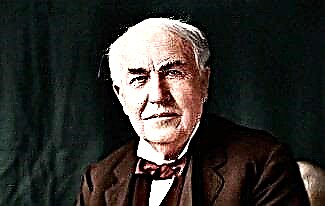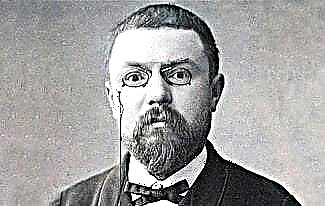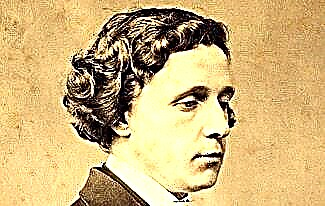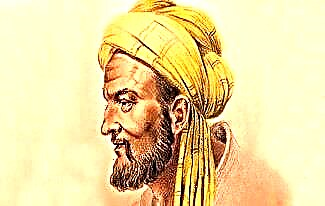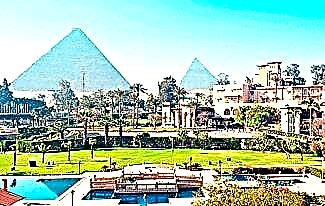Maria I (nee Mary Stuart; 1542-1587) - Queen of Scots from infancy, actually ruled from 1561 until her deposition in 1567, as well as Queen of France in the period 1559-1560.
Her tragic fate, filled with dramatic "literary" turns and events, aroused the interest of many writers.

There are many interesting facts in the biography of Mary I, which we will talk about in this article.
So, here is a short biography of Mary Stuart.
Biography of Mary Stewart
Mary was born on December 8, 1542 in the Scottish palace of Linlithgow in Lothian. She was the daughter of King James 5 of Scotland and the French princess Marie de Guise.
Childhood and youth
The first tragedy in the biography of Mary happened 6 days after her birth. Her father could not survive the shameful defeat in the war with England, as well as the death of 2 sons, who were potential heirs to the throne.
As a result, the only legitimate child of Jacob was Maria Stuart. Since she was still an infant, her closest relative James Hamilton became the regent of the girl. It is worth noting that James had pro-English views, thanks to which many nobles who were expelled by Mary's father returned to Scotland.
A year later, Hamilton began looking for a suitable groom for Stuart. This led to the conclusion of the Greenwich Treaty in the summer of 1543, according to which Mary was to become the wife of the English Prince Edward.
Such a marriage allowed the reunification of Scotland and England under the rule of a single royal dynasty. In the fall of the same year, Mary was officially proclaimed Queen of Scots.

However, a military conflict soon began in the country. The pro-English barons were removed from power, and Cardinal Beaton and his associates, focused on rapprochement with France, became political leaders.
At the same time, Protestantism was gaining more and more popularity, the adherents of which saw the British as their friends. In the spring of 1546, a group of Protestants assassinated Beaton and captured St. Andrews Castle. After that, France intervened in the conflict, which actually drove the English army out of Scotland.
At the age of 5, Mary Stuart was sent to France, to the court of Henry II - the monarch and her future father-in-law. Here she received an excellent education. She studied French, Spanish, Italian, Ancient Greek and Latin.
In addition, Maria studied ancient and modern literature. She was fond of singing, music, hunting and poetry. The girl aroused sympathy among the French aristocrats, various poets, including Lope de Vega, dedicated poems to her.
Fight for the throne
At the age of 16, Stewart became the wife of the French heir Francis, who was constantly ill. After 2 years of married life, the guy died, as a result of which power passed to Maria de Medici.
This led to the fact that Mary Stuart was forced to return to her homeland, where her mother ruled, which the people did not particularly like.
In addition, Scotland was swallowed up by the Protestant revolution, as a result of which the royal court was divided into Catholics and Protestants.

Some and the second tried to win over the queen to their side, but Maria behaved very carefully, trying to adhere to neutrality. She did not abolish Protestantism, which was then already recognized as the official religion in the country, but at the same time continued to maintain relations with the Catholic Church.
Having entrenched herself on the throne, Mary Stuart achieved comparative calm and stability in the state. Curiously, she did not recognize Elizabeth I as Queen of England, since she had more rights to the English throne. This was due to the fact that Elizabeth was the illegitimate heiress.
Nevertheless, Mary was afraid to enter into an open struggle for power, realizing that she could hardly take the place of Elizabeth by force.
Personal life
Maria had an attractive appearance and was an educated girl. For this reason, she was popular with men. After the death of her first husband, Francis, the queen met her cousin Henry Stuart, Lord Darnley, who had recently arrived in Scotland.
The young people showed mutual sympathy, as a result of which they decided to get married. Their wedding caused outrage among Elizabeth I and Scottish Protestants. Former allies of Mary in the person of Morey and Maitland conspired against the queen, trying to overthrow her from the throne.
However, Stewart was able to suppress the rebellion. The newly elected spouse soon disappointed the girl, since he was distinguished by weakness and lack of dignity. By the time of her biography, she was already pregnant with Henry, but even this could not awaken any feelings in her for her husband.
Feeling dislike and rejection from his wife, the man organized a conspiracy, and in front of Maria's eyes he ordered the murder of her favorite and personal secretary David Riccio.
Obviously, by this crime the conspirators were going to force the queen to make concessions. However, Maria went to the cunning: she defiantly made peace with her husband and Morey, which led to a split in the ranks of the conspirators, after which she dealt with the murderers.
At that time, Mary's heart belonged to another man - James Hepburn, while her husband was a real burden for her. As a result, in 1567 under mysterious circumstances, Henry Stuart was killed near Edinburgh, and his residence was blown up.

Maria's biographers still cannot come to a consensus as to whether she was involved in the death of her husband. Immediately after that, the Queen became Hepburn's wife. This act irrevocably deprived her of the support of the courtiers.
Hostile Protestants revolted against Stuart. They forced her to transfer power to her son Yakov, whose regent was one of the instigators of the uprising. It is important to note that Mary helped James escape Scotland.
The deposed queen was imprisoned in the Lokhliven castle. According to some sources, twins were born here, but their names are not found in any of the documents found. Having seduced the overseer, the woman escaped from the castle and went to England, counting on the help of Elizabeth.
Death
For the Queen of England, Stewart always posed a threat, since she was a potential heir to the throne. Mary could not even imagine what measures Elizabeth would take to get rid of her.
Deliberately dragging out the time, the Englishwoman entered into correspondence with her cousin, not wanting to personally see her. Stewart had a reputation as a criminal and a husband-killer, so her fate was to be decided by the English peers.
Maria found herself embroiled in a careless correspondence with Anthony Babington, an agent of the Catholic forces, in which she was loyal to the murder of Elizabeth. When the correspondence fell into the hands of the Queen of England, Stewart was immediately sentenced to death.
Mary Stuart was beheaded on February 8, 1587. At that time she was 44 years old. Later, her son Jacob, King of Scotland and England, ordered the transfer of his mother's ashes to Westminster Abbey.
Photo by Mary Stuart












